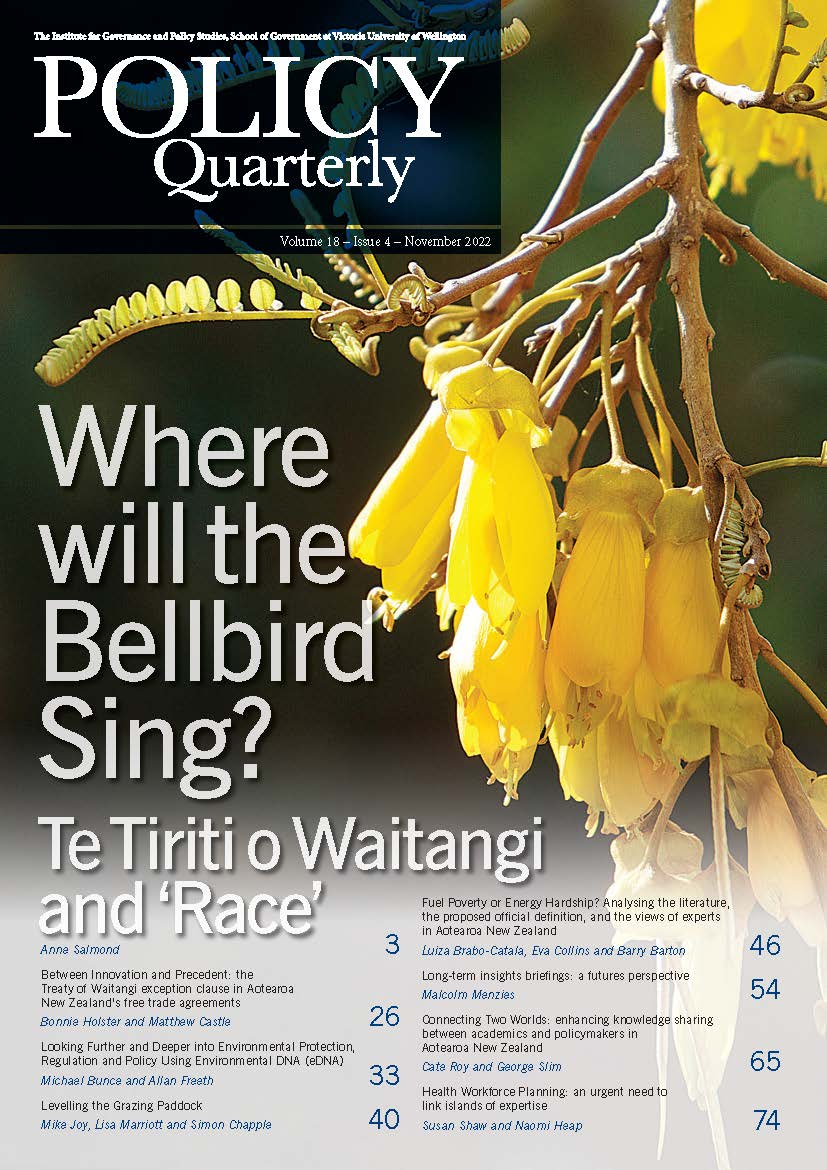Looking Further and Deeper into Environmental Protection, Regulation and Policy Using Environmental DNA (eDNA)
DOI:
https://doi.org/10.26686/pq.v18i4.8013Keywords:
eDNA, biomonitoring, environmental protection, environmental policy, ecosystemsAbstract
DNA sequencing technologies are transforming how environments are monitored. In this article, we pose the question: is environmental DNA (eDNA) the tool that Aotearoa New Zealand needs, but does not yet realise it does? The step change with eDNA is that genetic ‘breadcrumbs’ left behind in the environment can identify every living thing, from microbes to mammals, thus providing a more nuanced and holistic lens on ecosystems. Using eDNA, we can explore the biological networks that underpin healthy environments. Here we explore whether changes in policy setting, guidance, or pathways for uptake of eDNA are needed. Can eDNA help us make better decisions, inform policy and protections, track restoration, and act as a deterrent to reduce environmental harm?
Downloads
Downloads
Published
Versions
- 2022-11-09 (2)
- 2022-11-06 (1)
Issue
Section
License
Permission: In the interest of promoting debate and wider dissemination, the IGPS encourages use of all or part of the articles appearing in PQ, where there is no element of commercial gain. Appropriate acknowledgement of both author and source should be made in all cases. Please direct requests for permission to reprint articles from this publication to Policy-Quarterly@vuw.ac.nz.



